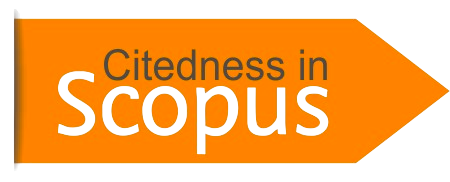Renewable Energy and Economic Growth in Indonesia: Evidence from VECM Causality
DOI:
https://doi.org/10.30631/sdgs.v2i2.1448Keywords:
Renewable Energy, Economic Growth, VECM, Granger CausalityAbstract
Attention to sustainable development globally has accelerated the focus on renewable energy consumption in recent decades. This study discusses the causality between carbon dioxide emissions, renewable energy consumption-hydropower, renewable energy consumption-geothermal, biomass, and other sources on economic growth. Using the VECM and Granger Causality methods to see the relationship between variables in the long term and short term. This study uses time series data from 1990-2020 in Indonesia. The results of the study are that carbon dioxide emissions and renewable energy consumption-hydropower are significantly positive for economic growth in the long and short term, while renewable energy consumption-geothermal, biomass, and other sources are significantly negative for economic growth. In terms of causality, in the long term, all variables have a one-way causal relationship, while in the short term, carbon dioxide emissions and economic growth and renewable energy consumption-geothermal, biomass, and other and economic growth have an alternating causality relationship.
References
Anderson, B. (1983). Imagined communities. London: Verso.
Austin, D. (2009). Fatty acids, breastfeeding and autism spectrum disorder. E-journal of Applied Psychology, 5(1), 49-52. Retrieved from http://ojs/lib.swin.edu.au/
Bildirici M. 2016. Environmental pollution, hydropower energy consumption and economic growth: Evidence from G7 countries. Renewable and Sustainable Energy Reviews.
BP Statistical Review of World Energy Workbook. 2021.
Buzan T. (2007). Mind maps. September 3, 2009, retrieved from http://www.buzanworld.com/Mind_Maps.html.
Dinc, Dilek Temiz & Akdogan, Ece C. (2019). Renewable Energy Production, Energy Consumption and Sustainable Economic Growth in Turkey: A VECM Approach. Journal Sustainability 11(1273).
Fattah, Azhima Muhammad, et. al. (2021). Causality Analisys: Economic Growth, Economic Openness, Energy Consumption, and Carbon Dioxide Emission in Indonesia. Jurnal Media Ekonomi dan Manajemen 36(2).
Firmansyah, Siti N. (2018). Paris Agreement. Kompastiana. https://www.kompasiana.com/nurjanahfirmansyah/5a9270fccbe52373ae5a69f3/parisagreement [accessed 26.03.19]
Fung, M. (2006, December 12). Asthma rates are increasing. Winnipeg Free Press, pp. C4.
Gujarati, Damodar. N. (2003), "Basic Econometric Fourt Edition”. New York: The McGraw-Hill Compaies Inc.
Harris, M. (2011, August 16). Grades improve if classes start later, studies find. The Calgary Herald. Retrieved from http://www.calgaryherald.com/
Insukindro. (1993). "Pembentukan Model Dalam Penelitian Ekonomi”. Jurnal eknomi dan Bisnis Indonesia 1(7), BPFE-UGM.
Iqbal. (2020). Pengelolaan Dan Pemanfaatan Sumber Daya Alam Dalam Perspektif Ekonomi Islam. Al-Hisab: Jurnal Ekonomi Syariah 1(1), 13-14
Isnowati, Sri. (2002). "Error Correction Model (ECM) Sebagai Salah Satu Bentuk Pemilihan Model dalam Ekonometri”. Jurnal Fokus Ekonomi 1(1).
Khobai, Hlalefang. (2018). Renewable energy consumption and economic growth in Indonesia. Evidence from the ARDL bounds testing approach. Journal Munich Personal RePEc Archive. No. 85081.
Mancusa, S., & Viola, A. (2015). Brilliant green: the surprising history and science of plant intelligence (J. Benham, Trans.). Washington, DC: Island Press.
Ronsumbre, Valentinday dan Ihsannudin. (2021). Persepsi Masyarakat terhadap Kondisi Sumber Daya Alam guna Mendukung Usaha Pertanian Berkelanjutan di Desa Duber, Kecamatan Supiori Timur, Kabupaten Supiori. AGRISCIENCE, 2(2), 468-469. doi: 10.21107/agriscience.v2i2.12986
Russel, Edwin, et. al. (2022). Dynamic Modeling and Forecasting Data Energy Used and Carbon Dioxide (CO2). Journal Science and Technology Indonesia 7(2).
Smith, F. M., & Jones, W. (2004). The college student. In C. Wood & M. Meyer (Eds.), Cross-cultural education (pp. 75-105). London, Canada: MacMillan.
Syarid, Syon. (2004). "Hubungan Jangka Panjang antara Investasi dengan Pertumbuhan Ekonomi Indonesia”. Jurnal Ekonomi dan Manajemen XII/1-2004. Universitas Andalas.
The World Bank. World Development Indicators (WDI). 2016. Available online: http://databank.worldbank.org [accessed 20.02.17].














